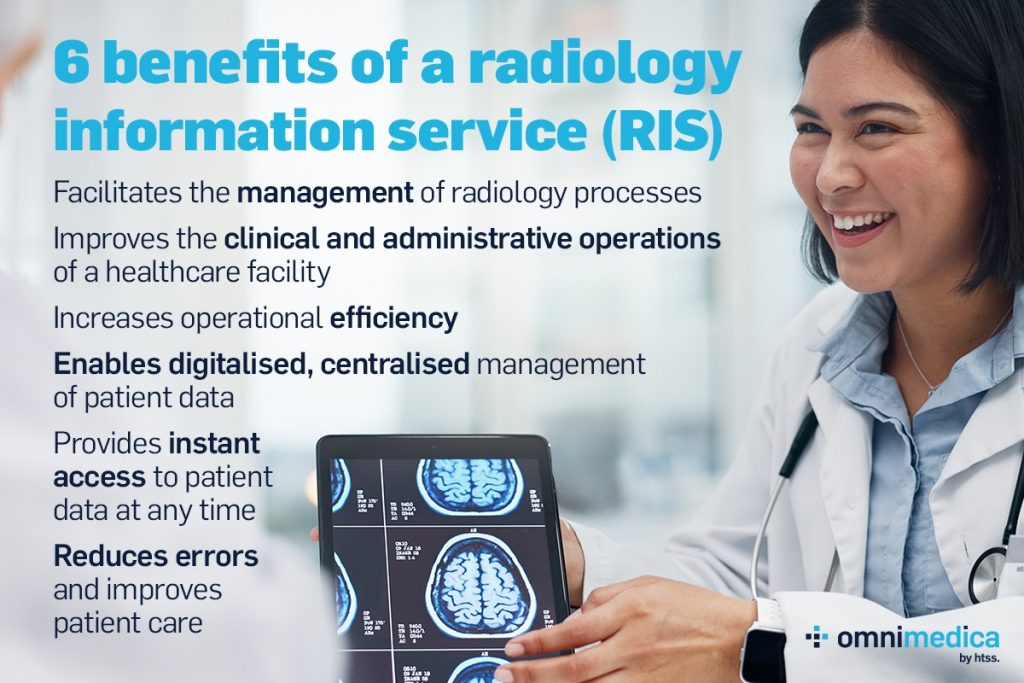Medical imaging departments may enjoy numerous advantages from the introduction of a radiology information system (RIS), which transforms the way radiology practitioners provide healthcare services. RIS, a specific type of medical software, makes radiology processes easier to administer and enhances clinical and administrative operations in healthcare facilities. Service delivery, patient care, and overall operational efficiency can all be significantly improved by integrating a strong RIS into a radiology department and larger healthcare facility.
A significant advantage of a RIS is the digitalized, centralized patient data management. By removing the need for physical storage and ensuring the safe preservation of patient data, the digitization of patient records frees up space that can be better utilized for the benefit of both staff and patients. Radiology software makes it possible to organize, retrieve, and change detailed patient data, such as imaging results and medical history. By guaranteeing that radiologists and other medical professionals have instant access to vital patient data, RIS lowers the possibility of mistakes and raises the standard of patient care.

Radiology departments frequently struggle with scheduling visits, keeping track of imaging supplies, and guaranteeing that medical personnel are available. Therefore, the solution to ease resource management and optimize scheduling is a radiology RIS. These procedures can be optimized and automated by a RIS, which also offers tools for resource allocation and real-time scheduling. As a result, there are shorter wait times for patients and better staff and equipment utilization for imaging. A RIS also aids in keeping an orderly inventory of imaging supplies, guaranteeing that necessary items are constantly available when required. As a result, radiology departments can operate more smoothly and offer patients better treatment.
The RIS’s ability to integrate with other health information systems, including electronic health records (EHRs), is a crucial aspect. Care coordination and thorough treatment plans are made possible by this interoperability, which is made possible by adherence to the HL7 standard and guarantees that all pertinent patient data and imaging studies are available across departments and healthcare providers. Utilizing the HL7 standard is beneficial for patients since it allows health sysv tems to exchange information, which raises the standard of patient care.
RIS radiology systems play a key role in modernizing radiology practices. The implementation of a Radiology Information System (RIS) brings substantial and scalable advantages to radiology departments and healthcare institutions alike.
Contact us in order to see how we can help you tailor RIS capabilities to your business.



